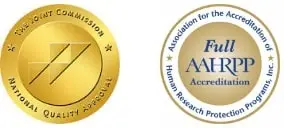Atherosclerosis and Angina Pectoris – FAQs
Angina pectoris (also referred to angina) is chest pain / pressure that occur when the blood and oxygen supply to the heart muscles cannot keep up with the needs of the muscle. When coronary arteries are narrowed by more than 50% to 70%, the arteries may not be able to increase the supply of blood to heart muscles during exercise / other period of high demand for oxygen.
- An insufficient supply of oxygen to the heart muscle cause angina
- Angina that occurs with exercise or exertion is called exertional angina.
Diabetic patients, progressive decrease in blood flow to the heart may occur without any pain or with just shortness of breath or unusually early fatigue.
Exertional angina usually feels like a pressure, heaviness, squeezing or aching across the chest. This pain may travel to the neck, jaw arms back or even the teeth and may be accompanied by shortness of breath, nausea or a cold sweat. Exertional angina typically lasts from one to 15 min and relieved by rest or by placing a tablet of NTG under tongue. Both resting and NTG decreases the heart muscle’s demand for oxygen, this relieving angina. Angina also can occur at rest. Angina at rest more commonly indicates that a coronary artery has narrowed to such a critical degree that the heart is not receiving enough oxygen even at rest. Angina at rest infrequently may be sued to spasm of a coronary artery (a condition called Prinzmetal’s or variant angina.
Causes:-Classified as one of the following two types-
- Stable Angina
- Unstable Angina
- Coronary artery spasm
- Blockage of a coronary artery by blood clot or by compression from something outside the artery
- Inflammation or infection of coronary arteries
- Injury to one / more coronary arteries
- Hypertension
- Hyperlepidemia
- Diabetes
- Smoking
- Male genders
- Inactive ( sedentary life style)
- Family H/O of Coronary artery diseases
- Aging
- Regular use of stimulants especially nicotine, cocaine or amphetamines
Angina itself is a symptom (or set of symptoms) not a diseases. Any of following may signal angina
- Any uncomfortable pressure, fullness, squeezing or pain in the centre of the chest
- It may also feel like tightness, burning or a heavy weight
- Pain may spread to the shoulder, neck or arms
- It may be located in upper abdomen, back or jaw
- ECG
- Chest x-ray
- Blood test – cardiac enzymes(CPKMB, TROP I)
- Exercise stress test
- Thallium stress test
- Dobutamine echo cardiogram stress test
- Coronary angiogram
Treatment of angina depend on the serenity of symptoms and result of test that are done to find the underlying cause
Self care at home:-- Call immediate help and intervention is the best chance for survival if someone is having heart attack
- Lie down in a comfortable position with the head up
- Chew a regular adult aspirin or its equivalent or use of tablet NTG
- Medical treatment – Aspirin, clopidogrel, atorvastatin, beta blocker
- Surgical Treatment
- Regular follow up
Best action is to reduce risk factor early in life Although no one can escape aging, inherited risk or gender, certain risk factors are in your control
- Stop smoking and using nicotine in any form
- Control high blood pressure
- Lower blood fat (through diet, exercise and medication)
- Maintain a healthy weight
- Control diabetic and blood sugar
- Do not use stimulants such as cocaine and amphetamines


